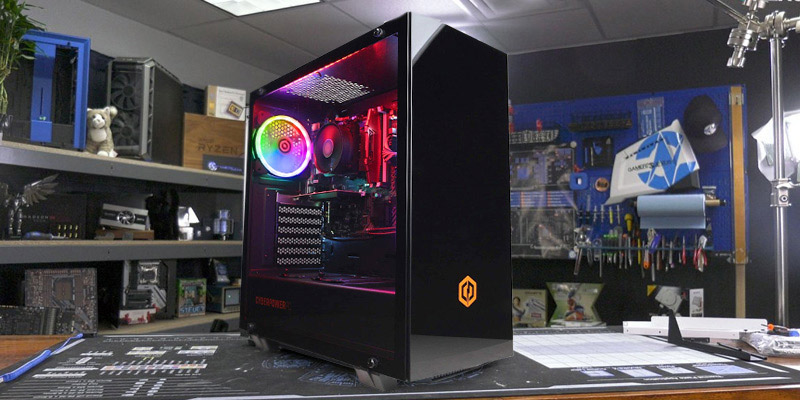
Not many people consider the case an important part of their gaming PC build. But that is not true. The case you use for your gaming PC build can affect a number of things. One of these things is the airflow of your unit. Then there’s also the build quality of the case to protect the hardware components inside. Here is a detailed guide on the things you need to consider to choose the best case for your PC build:
- Case Size
- Hardware Sizes
- Air Flow
- Build Quality
- Aesthetics
- Cable Management
1 – Case Size
The size is the first thing you need to consider when buying a case for your gaming PC. There are four standard cases recognized in the market. This includes full tower (large), mid-tower (medium), micro-ATX (small), and mini-ITX (smaller). But before you pick one Size, it needs to support the Size of your motherboard.
Refer to the motherboard-case size compatibility guide below:
- Extended ATX – Full Tower (Large)
- Standard ATX – Mid Tower (Medium)
- Micro ATX – Micro-ATX (Small)
- Mini ATX – Mini-ITX (Smaller)
Consider that your motherboard should fit inside the case you want to purchase. This means that placing a micro-ATX motherboard to a full tower case is possible. However, there will be a lot of unused free space. And that won’t really make any sense at all.
2 – Hardware Sizes
Aside from your motherboard size, you also need to check the dimensions of your main hardware components. All of them should easily fit inside the case. The common compatibility issues you need to check when buying a gaming case are the video graphics card length, your air CPU cooler height, and the liquid cooling radiator size.
- Graphics card length – Longer graphics cards can have some issues in more minor cases, so that’s one thing you need to consider. But nowadays, mid-tower and smaller cases are being designed to accommodate longer graphics cards. Still, you must check the length size of your graphics card before buying a case.
- Air CPU cooler – Some air CPU coolers have taller heatsinks than other models. So check the CPU cooler tower height.
- Liquid cooling radiator size – The CPU radiator comes in various sizes. And while most CPU coolers and graphics cards can fit into any case, not every radiator size can fit into the case. So you need to consider the radiator size before buying a case.
3 – Air Flow
PC cases play an essential role in the airflow of your gaming PC. Depending on its design, your case can either contribute to or hinder your unit’s airflow.
Refer to the checklist below to choose a case with a good airflow:
- The case should fit multiple fans at various locations, including your system’s front, back, top, and side. While most units come with pre-installed fans, you can install additional fans to help with the system’s cooling process.
- The case should have panels from its front, side, and top. The best CPU cases have grilled panels and openings. They allow more air to flow in and out of your case, thus keeping your hardware and components cooler.
- The case should fit your CPU coolers and liquid cooling radiators. Aside from your system fans, other cooling components should easily fit into your system as well.
4 – Cable Management
The best CPU case offers plenty of cable management options. This will efficiently manage your cables and a clean cable set up. Having several cable management options in your case will help you to properly hide your cables.
Another advantage for cases with excellent cable management options will help first-time PC builders with their cables.
- The case should come with several holes, hooks, and loops.
- It should have rubber grommets around the holes.
- The case should have some depth behind the motherboard to place some cables.
- It should come with PSU shrouds to make your build look really clean.
5 – Build Quality
The build quality is another important thing you need to consider for your case. Choosing cheaper cases are built with low-quality materials. Thus, they are likely to get scratches or dents since they are less sturdy and have thinner panels. It also means that cheaper cases will wear down quickly.
While expensive cases tend to have a solid frame. They are also sturdy and will last longer than cases made with cheaper materials. But if you don’t have a budget, you can always look for a quality case within your budget. Always check the materials of the case you’re planning to buy.
6 – Aesthetics
The case aesthetics is essential for people who want to build a cool gaming PC system.
Side-Through Panels
One of the things you should check for the case aesthetics is the see-through side panels. A transparent side panel will help show the inside of your PC build, especially if you have any hardware components with RGB lightning. Another tip is to look for a case with see-through panels made of tempered glass.
RGB Lighting
There are now cases with RGB lighting. While you can manually add RGB led strips to a normal case, it is better to purchase a case that already comes with RGB led lights. There are also cases with specific color schemes that you can choose from.
PSU Shrouds
PSU shrouds can help fill the gaps on the hole designed for your cable management. PSU shrouds help you give a clean look to your PC build so that the cables are hidden from plain sight.
***
For more tips on building your gaming PC, make sure to subscribe to our blog and newsletter.